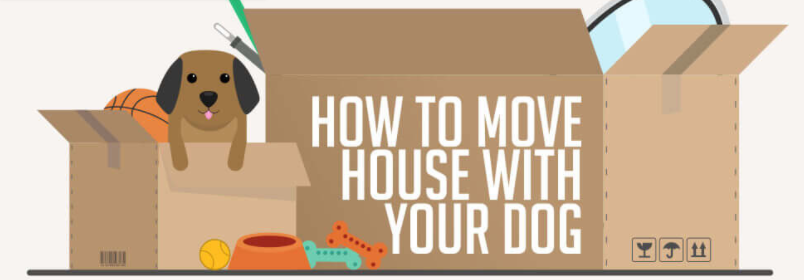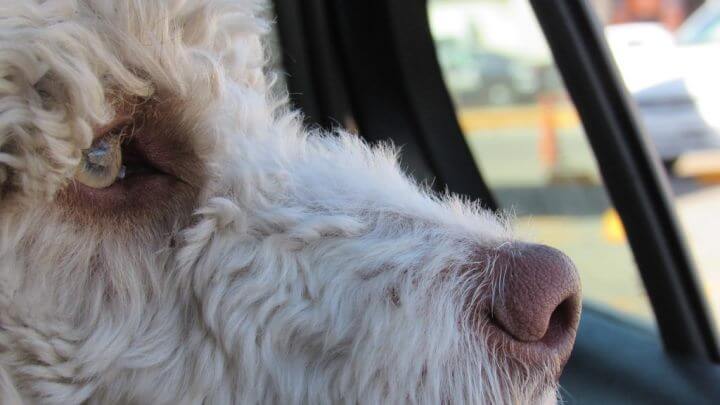While moving is often stressful, it does symbolize a new beginning and exciting experience for you. However, before you move, you have to realize that your dog might not feel the same way.
Dogs thrive on routine and any sudden changes to what they’re already used to can make them anxious and stressed. That said, here’s how you are able to make moving a less stressful event for your dog.
Mindset and Preparation
Prior to moving day, do your best to prep your dog as much as you can. Keep its daily routine, but add the following to get him or her acclimated to the pending changes:
- When packing in the presence of your dog, constantly reassure it and give it treats to reduce its stress about the major changes in your home. If some familiar items in your home are getting packed up, your dog may get anxious about these sudden changes.
- If your dog will be traveling in a carrier or crate, make sure that it is used to it. Make it a safe and comfortable space in your home where your dog will think of it positively. When moving day comes, the familiarity of the crate can help reduce your dog’s stress.
- Most dogs like road trips, but if your dog hasn’t been on one, then try a short one with him or her in the crate. This way, your dog can get acclimated to both the crate and the car ride.
As moving day gets closer, increase the length of your car rides to help it cope. Reward it with treats and/or affection to give it good memories to associate with these trips.
- Dogs can get carsick too, so if yours gets easily carsick, then consult your vet on any medication or advice that can help your dog out. Since moving usually entails traveling quite a distance, a carsick dog may get sick and upset.
- There are professional pet transportation services available in case your dog can’t make the trip via plane or car with you.
- If by accident your dog gets loose during the moving process, make sure that its tags have updated information about your ownership and contact details. This is important especially if your dog is not microchipped.
Maintain As Much Routine As Possible
While you can understandably have trouble keeping track of your dog as moving day comes closer as well as on the day itself, it’s important to keep as much of its routine intact. This way, your dog will not be distressed at the amount of changes happening all at once.

- When your movers come to collect your items, keep your dog in a quiet, familiar and comfortable place, away from all the hubbub. You are able to take it to a family member’s house or a friend’s, as long as it’s one he or she is familiar with. Otherwise, keep it in a room in your home with all necessities provided.
- Feed and walk it as regularly as possible. Keep these schedules intact to give your dog a feel of his or her usual routine.
- If traveling by plane, get yourself and your dog to the airport early to reduce stress on both of you. The sooner you get your dog checked in or used to the new environment of the airport, the better.
- During the move itself, keep your dog in its crate or leashed at any point in time. This is for its own safety, lest it gets distressed and ends up escaping due to his or her anxiety.
- Have a bag handy containing all of your dog’s necessities to keep it calm and you equipped during the move. Items in the bag can range from food and drinks to toys, medication, leashes, clean-up bags and health records/paperwork.
Allow Time to Adjust
Finally, after the move is done, take note that it’s completely normal for your dog to take some time to adjust. After all, this major disruption in its routine can take some getting used to. At this point in time, pay close attention to your dog’s health and moods.
- Allow your dog to get to know its new environment better. Some basic house training may have to be re-taught to it, even if he or she already knows how it works, as it is in a new and unfamiliar environment.
- Don’t get angry at your dog if it has an accident in your new living room, as it may not be aware of the way things should be in your new home.
- Let your dog explore the new home. Familiarity can help make it feel less anxious, so it would be good to let him or her see familiar items that were also moved from your old home.
- Keep your dog leashed or crated for a few months after the move. Your dog might have the instinct to go off searching for a way back to your old home and can get lost in the process.
- Monitor if your dog’s anxiety levels are different from normal. It may display as unnecessary aggression, digestive problems, lethargy, or lack of appetite.
If your dog displays any of these symptoms, ask for advice from a vet to determine how you are able to help reduce its anxiety.
Conclusion
Moving can be equally stressful and exciting for you, but more often than not, it’s more stressful than anything for your dog. When a disruption to your dog’s routine occurs, anxiety can cause it to be physically sick or affect its overall disposition.

Taking these careful steps to make the entire process stress-free – or less stressful, at the very least – will not only reduce your dog’s stress, but yours as well.


